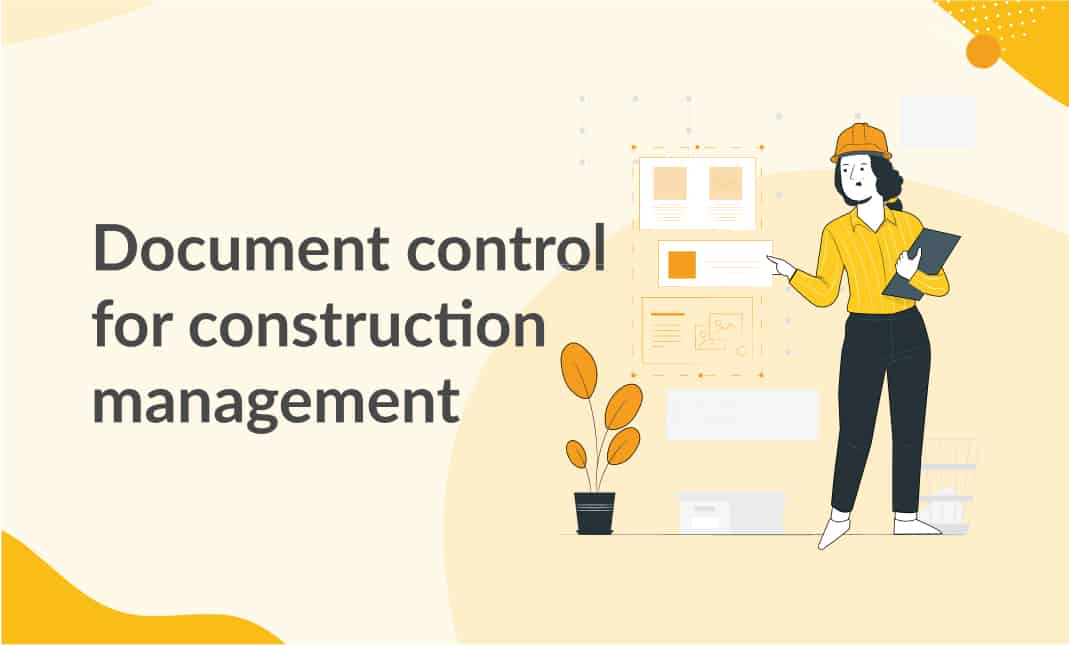Efficient Construction Document Management Solutions for each Task
Efficient Construction Document Management Solutions for each Task
Blog Article
Optimizing Project Cooperation: Architect's Finest Practices in Building Paper Administration
In the complex world of building tasks, the efficient administration of building and construction records stands as a keystone for success. Engineers, with their thorough attention to detail and ingenious style options, are entrusted with managing a symphony of stakeholders, resources, and timelines. Nonetheless, in the middle of this complexity exists a critical question: just how can designers streamline collaboration procedures to improve project results? By exploring crucial approaches such as leveraging cloud-based platforms, developing robust communication procedures, and ensuring data protection, architects can raise their record management methods to brand-new elevations.
Leveraging Cloud-Based Platforms
Leveraging cloud-based systems is a fundamental approach for modern-day engineers in maximizing building and construction record monitoring procedures. By transitioning from typical paper-based systems to shadow options, designers can enhance partnership, improve document ease of access, and enhance overall project efficiency. Cloud-based systems use designers the capability to store, share, and update building and construction records in real-time, making sure that all staff member have access to the most current information regardless of their place. This ease of access promotes seamless communication and coordination among job stakeholders, causing less errors and delays in the building and construction procedure.
In addition, cloud-based systems offer a protected setting for storing delicate job information, supplying file encryption, regular back-ups, and individual permission settings to protect data honesty. Architects can additionally benefit from the scalability of cloud remedies, enabling them to adjust storage space capability and functionality based upon project needs. In general, leveraging cloud-based systems equips engineers to enhance their construction record administration processes, driving higher collaboration, effectiveness, and success in their tasks.
Implementing Variation Control Equipment
Having established the advantages of cloud-based systems in construction paper monitoring, architects can now improve their document control procedures by applying Version Control Equipment. Variation Control Equipment (VCS) are necessary tools that track adjustments in documents, making certain that employee are constantly dealing with the most recent and most exact details. By executing VCS, engineers can keep a centralized repository where all job papers are saved, allowing seamless collaboration while minimizing the danger of errors and version conflicts.
This function is particularly valuable in construction jobs where style iterations and alterations are typical. This openness not only improves liability yet likewise aids in fixing disputes or inconsistencies that may develop during the job lifecycle.
Establishing Interaction Procedures
To make certain reliable and efficient project sychronisation, designers have to establish clear and robust communication protocols within their construction record management procedures. This platform can be a task administration software program, email strings, or cloud-based storage space services.
Moreover, communication procedures should likewise consist of guidelines on how to take care of conflicts, adjustment orders, and immediate concerns that may arise during the task lifecycle. Developing an organized strategy to interaction ensures that all stakeholders are on the exact same web page, promotes transparency, and eventually contributes to the successful completion of the construction project.
Using BIM Software for Coordination
BIM software plays a pivotal function in enhancing control amongst project staff member in the building sector. Structure Details Modeling (BIM) helps with collaboration by giving a central platform where designers, engineers, contractors, and other stakeholders can interact in a collaborated fashion. With BIM software application, visit this website project participants can access and update a common design that contains thorough info regarding the building style, building components, and project schedules.

Moreover, BIM software program enables real-time cooperation and communication among employee, no matter their physical location. Through cloud-based BIM systems, job stakeholders can access the most recent task info, track adjustments, and make educated choices quickly. Overall, leveraging BIM software application for sychronisation enhances task efficiency, efficiency, and ultimately causes effective job outcomes.
Ensuring Information Security and Compliance
In the world of building and construction document administration, guarding information integrity and making certain regulatory compliance are extremely important factors to consider for engineers and other project stakeholders. Architects have to apply durable safety and security steps to shield sensitive project details from unapproved access or breaches. Using secure cloud storage space services with file encryption protocols and access controls can aid alleviate dangers related to information theft or loss. On a regular basis updating software and systems, carrying out safety and security audits, and supplying team training on data protection best methods are essential action in maintaining a safe and secure environment for building and construction paper administration.

Conclusion
Finally, designers can optimize project collaboration in building and construction document management by leveraging cloud-based systems, implementing variation control systems, establishing interaction procedures, using BIM software for coordination, and guaranteeing information safety and conformity. These ideal methods help improve the construction process, boost interaction amongst job stakeholders, and improve effectiveness in job shipment. By adhering to these guidelines, designers can effectively handle building documents and facilitate effective task outcomes.
Through BIM software, job participants can access and upgrade a shared design that has in-depth information about the building design, building elements, and job routines.
With cloud-based BIM systems, project stakeholders can access the newest job information, track changes, and make notified choices immediately - construction document management. Generally, leveraging BIM software for control enhances task performance, performance, and ultimately leads to successful task results
In conclusion, engineers can enhance task cooperation in construction file management by leveraging cloud-based systems, applying variation control systems, establishing interaction click now methods, utilizing BIM software for sychronisation, and making sure information safety and compliance. These best methods help improve the building and construction process, improve communication amongst project stakeholders, and improve effectiveness in project shipment.
Report this page